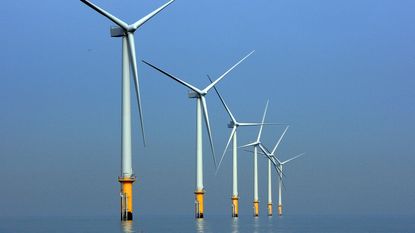Cash in on a profitable end to the oil era
Cheap oil stocks could still make a lot of money and carve out a new future before oil demand peaks


Everybody hates oil stocks. Income seekers are scared by the dividend cuts. Sustainable investors don’t like the pollution. Momentum traders aren’t interested in anything that’s not tech. And everybody else looks at the red ink in recent results and steers clear. So it’s understandable that most of the oil majors – BP, Chevron, ConocoPhillips, Eni, Equinor (formerly Statoil), ExxonMobil, Royal Dutch Shell and Total – are down 40%-60% this year.
With yields of 5% or more even after cuts, these firms look cheap if the oil price recovers once Covid-19 passes. Crude is $40 per barrel now, but was $60-$70 last year, at which point the majors are very profitable. The strongest argument against them is that oil is on its way out faster than expected. BP now forecasts that demand will peak around 2030 and could then drop rapidly. The world would still need some oil, but potential supply would far exceed demand. That would mean low prices, so low-cost sources (eg, Saudi Arabia) might drive out other producers.
This is a very plausible scenario. And yet if the majors respond to the implications, they could still be excellent investments.
Subscribe to MoneyWeek
Subscribe to MoneyWeek today and get your first six magazine issues absolutely FREE

Sign up to Money Morning
Don't miss the latest investment and personal finances news, market analysis, plus money-saving tips with our free twice-daily newsletter
Don't miss the latest investment and personal finances news, market analysis, plus money-saving tips with our free twice-daily newsletter
Dwindling reserves
All these firms have limited reserves, ranging from eight years of production for Shell to 17 for Exxon. If they want to keep producing oil, they must constantly invest in new reserves. And in all the parts of the world that the majors can access, new fields are harder to find and produce than their existing ones. Between 2008 and 2017, the five biggest – BP, Chevron, Exxon, Shell and Total – generated $1.5trn in cash, but reinvested four-fifths of it, according to Bloomberg.
If demand will shrink in a decade, a better strategy may be to stop investing in finding new reserves and run down existing ones to maximise free cash flow (see below) before demand peaks. The cash can be paid out as dividends, invested in new energy – such as offshore wind – or a mix of both.
The European majors appear to be moving in this direction. The US ones – always sceptical about an end to the oil era – are not. It’s possible that both strategies may work out – the last major still pumping oil could earn good returns.
There are risks. Crude might not get back to the $60-$70 range needed to produce lots of cash while running down reserves. Investing in non-oil projects may deliver a poor return. A return to high oil prices could tempt them to resume investing in expensive new fields. But these valuations are pricing in a lot of doubt. Oil majors feel a little like tobacco did in 2000. Out of favour, but with more cash and better prospects than tech-crazed investors think.
I wish I knew what free cash flow was, but I’m too embarrassed to ask
Free cash flow (FCF) measures a firm’s ability to generate spare cash that can be returned to shareholders as dividends or share buybacks, or used to pay down debts. FCF shows how much money is left over after all the costs of doing business and making capital investments.
Free cash flow is important because a business needs to generate excess cash if it’s going to reward investors. If the amount of cash it produces is little more than it needs to survive, it’s not going to be a good long-term investment. In addition, cash flow is harder to fake than accounting profits (net income or earnings per share) so can provide a useful check on whether the company is doing as well as it claims.
How you define FCF depends on whether you are an investor in debt (bonds or loans) or in equity (shares), and whether you want to carry out a more precise calculation or a rough estimate. The most common approach is to take earnings before interest and tax from the income statement, add back depreciation and amortisation (these are non-cash accounting measures that allow for the fact that the value of assets reduce over time), and subtract capital expenditure, changes in working capital and taxes. Alternatively, take cash from operations from the cash flow statement, add back the after-tax cost of interest and subtract capital expenditure.
This gives free cash flow to the firm (FCFF), which is what concerns a debt investor. Equity investors get what’s left over after paying creditors, so they may also look at free cash flow to equity (FCFE), which deducts the after-tax cost of interest and net repayment of debt (be alert for situations where this is being distorted by a big increase in borrowing).
Free cash flow is used in valuation tools such as free cash flow yield (FCF per share ÷ share price), as well as more complex discounted cash flow models. You can also look at profitability metrics such as the free cash flow margin (FCF ÷ sales).
Cris Sholto Heaton is an investment analyst and writer who has been contributing to MoneyWeek since 2006 and was managing editor of the magazine between 2016 and 2018. He is especially interested in international investing, believing many investors still focus too much on their home markets and that it pays to take advantage of all the opportunities the world offers. He often writes about Asian equities, international income and global asset allocation.
Cris began his career in financial services consultancy at PwC and Lane Clark & Peacock, before an abrupt change of direction into oil, gas and energy at Petroleum Economist and Platts and subsequently into investment research and writing. In addition to his articles for MoneyWeek, he also works with a number of asset managers, consultancies and financial information providers.
He holds the Chartered Financial Analyst designation and the Investment Management Certificate, as well as degrees in finance and mathematics. He has also studied acting, film-making and photography, and strongly suspects that an awareness of what makes a compelling story is just as important for understanding markets as any amount of qualifications.
-
 Private school fees soar and VAT threat looms – what does it mean for you?
Private school fees soar and VAT threat looms – what does it mean for you?Rising private school fees could see more than one in five parents pull their children out of their current school. Before you remortgage, move house or look to grandparents for help, here’s what you need to know.
By Katie Williams Published
-
 Best and worst UK banks for online banking revealed
Best and worst UK banks for online banking revealedWhen it comes to keeping your money safe, not all banks are equal. We reveal the best and worst banks for online banking when it comes to protecting your money from scams
By Oojal Dhanjal Published
-
 AstraZeneca CEO’s £1.8mn pay rise approved despite shareholder opposition
AstraZeneca CEO’s £1.8mn pay rise approved despite shareholder oppositionAstraZeneca hiked its dividend to persuade shareholders to accept CEO Pascal Soriot’s pay rise. Is he worth his salary?
By Dr Matthew Partridge Published
-
 Adidas, Nike or Jordans - could collectable trainers make you rich?
Adidas, Nike or Jordans - could collectable trainers make you rich?The right pair of trainers can fetch six figures. Here's how you can start collecting vintage Adidas, Nike or Jordans now
By Chris Carter Published
-
 The industry at the heart of global technology
The industry at the heart of global technologyThe semiconductor industry powers key trends such as artificial intelligence, says Rupert Hargreaves
By Rupert Hargreaves Published
-
 Three emerging Asian markets to invest in
Three emerging Asian markets to invest inProfessional investor Chetan Sehgal of Templeton Emerging Markets Investment Trust tells us where he’d put his money
By Chetan Sehgal Published
-
 What to consider before investing in small-cap indexes
What to consider before investing in small-cap indexesSmall-cap index trackers show why your choice of benchmark can make a large difference to long-term returns
By Cris Sholto Heaton Published
-
 Why space investments are the way to go for investors
Why space investments are the way to go for investorsSpace investments will change our world beyond recognition, UK investors should take note
By Merryn Somerset Webb Published
-
 Time to tap into Africa’s mobile money boom
Time to tap into Africa’s mobile money boomFavourable demographics have put Africa on the path to growth when it comes to mobile money and digital banking
By Rupert Hargreaves Published
-
 M&S is back in fashion: but how long can this success last?
M&S is back in fashion: but how long can this success last?M&S has exceeded expectations in the past few years, but can it keep up the momentum?
By Rupert Hargreaves Published